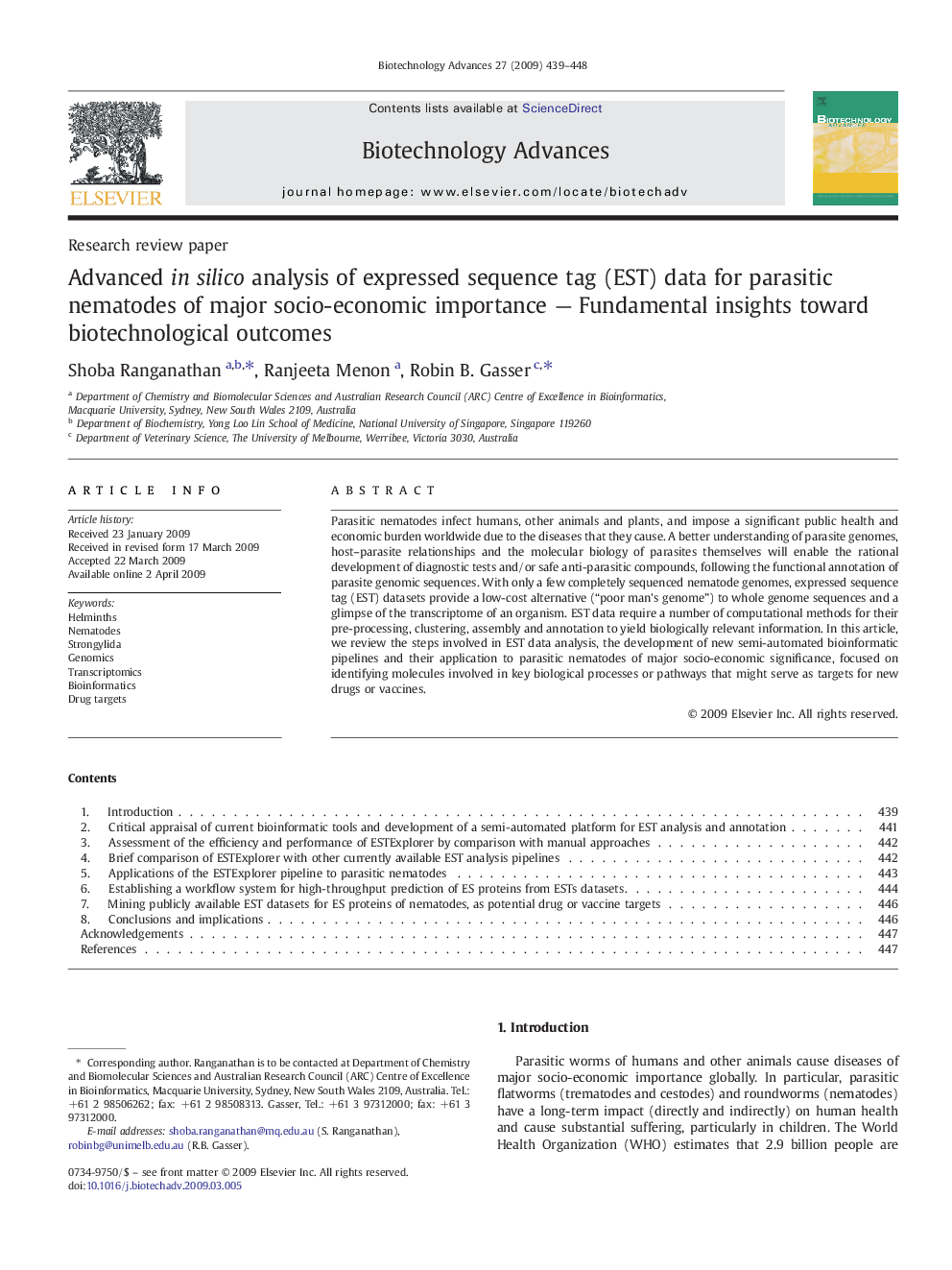| Article ID | Journal | Published Year | Pages | File Type |
|---|---|---|---|---|
| 14508 | Biotechnology Advances | 2009 | 10 Pages |
Parasitic nematodes infect humans, other animals and plants, and impose a significant public health and economic burden worldwide due to the diseases that they cause. A better understanding of parasite genomes, host–parasite relationships and the molecular biology of parasites themselves will enable the rational development of diagnostic tests and/or safe anti-parasitic compounds, following the functional annotation of parasite genomic sequences. With only a few completely sequenced nematode genomes, expressed sequence tag (EST) datasets provide a low-cost alternative (“poor man's genome”) to whole genome sequences and a glimpse of the transcriptome of an organism. EST data require a number of computational methods for their pre-processing, clustering, assembly and annotation to yield biologically relevant information. In this article, we review the steps involved in EST data analysis, the development of new semi-automated bioinformatic pipelines and their application to parasitic nematodes of major socio-economic significance, focused on identifying molecules involved in key biological processes or pathways that might serve as targets for new drugs or vaccines.
